Project planning is a widely used term in project management. It is a crucial step in the project life-cycle and is important across all industries and sectors, in all organisations. In this article, you will learn about what planning is, what a plan looks like, the importance of project planning and how to start a project plan with Sinnaps, the project planning app.

Índice
What is the Definition of Planning in Management?
How to planning activities? Planning is a management process. It has to do with the definition of goals for a project that a company is completing or in general, for the company itself. It has to do with planning everything involved in a project in order to use it effectively to reach the targets and visions of any project.
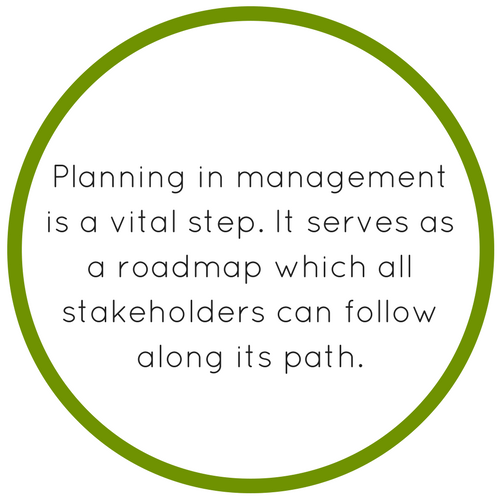
Planning in management is a vital step. It serves as a roadmap which all stakeholders involved with the project can follow along its path to the successful completion of the project. It serves as a certainty aspect and makes sure that everyone involved is aware of what is going to happen and how before the work actually begins. This allows for any issues or problems concerning the project to be resolved before its beginning.
The planning process in management is concerned with organising and managing all aspects of the project. The resources and their use are planned and allocated to tasks and activities as needed. The tasks and activities that make up the project are planned along a timeline, taking into consideration task dependencies and prioritising important activities. Team members are allocated to tasks and their responsibilities are clearly drawn out.
Project planning and scheduling means taking into consideration the future time constraints and cost constraints of the project. A plan also needs to take into consideration the quality of its deliverables and how it should plan out tasks and activities in order to achieve the desired quality. The plan will serve as a benchmark in the future against which project progress and quality of deliverables can be compared.
What Does a Project Management Plan Look Like?
A project plan is made up of a number of aspects. The project plan outline generally contains the following:
Scope, schedule and cost: Plans needs to outline the scope and size of the project, the scheduling of the tasks and activities, which means planning them out along a timeline. The plan also needs to include how the costs are going to be spread out and covered.
Management plans for quality, human resources, communications and risk: The quality of the outcomes needs to be established in the plan so that they can be measured throughout the project progress. Team members need to be allocated tasks before the project begins so that they are aware of what is expected of them. The way in which communications will be held also needs to be outlined along with the potential risks and bottlenecks of the project.
Requirements plan: In the project plan format, a project may have several requirements such as infrastructure, location space etc. It is important to plan and organise for the availability of these requirements before the project begins
Change management plan: Change is constant and there is no doubt that your project will face change and uncertainty. Planning for these changes and creating a way in which they will be dealt with and lessen their negative impact on the project. Change is sometimes the biggest driver for conflict, so it is important to manage it correctly and to establish a plan for its management.
Process improvement plan: Improvement and learning is essential in project management. It is important to strive for quality results. Lessons can be learned from previous projects and applied to future ones, heightening the potential for increased success.
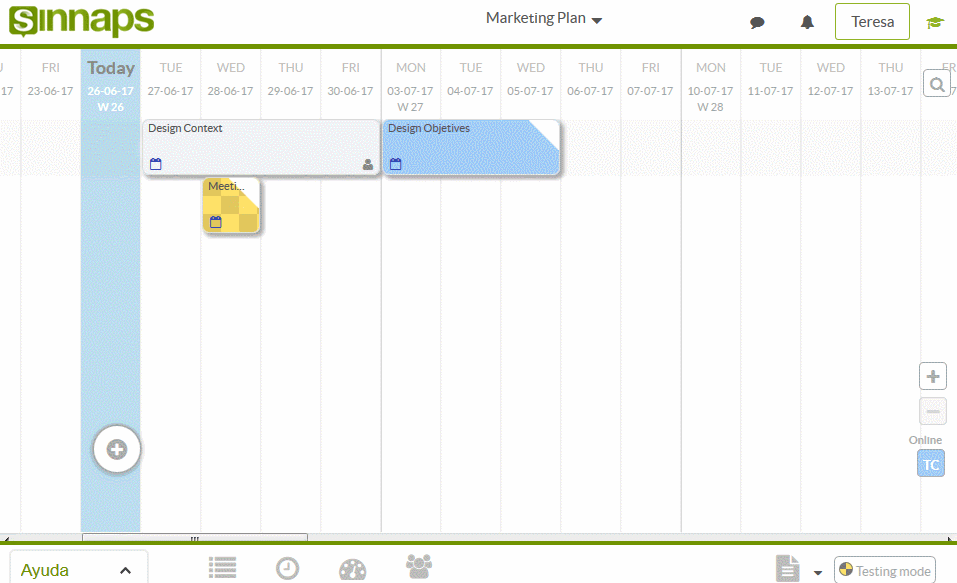
The Importance of Project Planning
Project planning is a vital part of project management. The three most common reasons for project failure are lack of stakeholder engagement, lack of communication and a lack of definition of roles and responsibilities. Project plans are important exactly for these reasons. They cover these downfalls of project management.
Stakeholder engagement: The project planning process acts as an aid in stakeholder engagement. It can be used to communicate with stakeholders and to show them that their view and opinion is valid and valued. By showing them the project development plan, they will have more peace of mind about how the project will run and in general, become more useful to the project team by giving their valuable input and advise.
Communication: In project planning and management, communication is key to a successful project. If people do not know what is expected of them how should you expect them to perform up to standard? A plan serves as an effective communication tool. It communicates in a clear manner of what the project will look like, how it will be performed and what the outcome needs to be so that everyone involved with the project is on the same page.
Clear definition of roles and responsibilities: A project work plan clearly sets out the tasks and activities of the project and maps am out along a timeline. The people that are involved with each of the tasks and activities are also clearly defined. This allows them to be aware of their work schedule, what is expected of them and when. This gives team members a defined understanding of their individual roles responsibilities and means that they can put their efforts towards working to achieving them.
Get started for free in Sinnaps
Project Resource Planning
The resources to a project are one of its most important factors. Without resources the project would be very unlikely to succeed. Resources are made up of both human and non-human aspects. The different types of resources need to be accounted for in separate sections.
Human resources and their varying skills will be required in different ways during each phase of the project. Different types of skills may be needed at different points of the project and this is important to plan for appropriately.
Project planning and control in terms of human resources needs to take into consideration the tasks of the project, the type of professional that is needed to execute the task, where these professionals will come from if they are not already part of the team, the skill level required for the said task, the quantity or number of professionals needed to complete the task, their hours required and the controller, meaning the person who will have full authority over the resource.
Non-human resources are again needed in different ways at different stages of the project. A lot of the considerations to be taken are similar to those of human resources however there is no skill involved as material resources do not have skills. Instead a cost estimation of the resources is an extra consideration to be taken into account.
Resource assumptions need to be included at the time of resource planning and they include figures such as an approximation for equipment lease or the requirement of an external source with which the deal is not yet completed.
Any risks associated with the resources should be planned for through mitigation strategies which will be used to deal with any potential problems if they do occur.
A list of sources from which the resources will be obtained needs to be made in a detailed manner. It should contain basic details about the source such as the name, the location, a contact name and details.
Resources graph to know the real consumption of your resources:
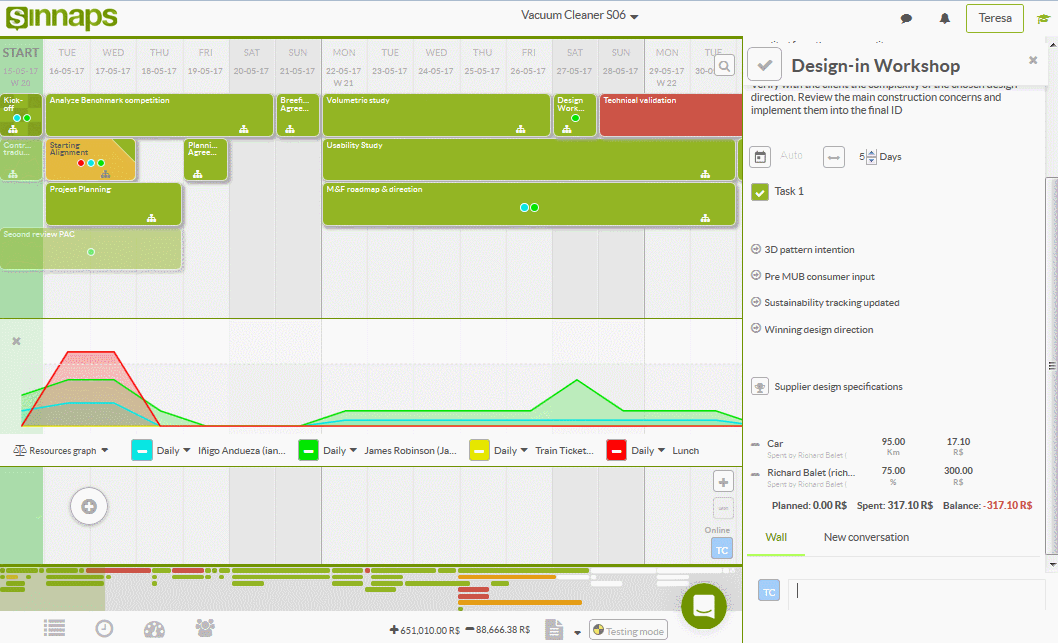
Project Plan Document Examples
Every project is different. It varies in size and complexity and scope. The project plan outline will be different for each project, as will the documents required for each project. Depending on the client that you were working for or whether it is an internal project- the documents will vary. Here are some examples of project documents that are commonly drawn up:
Project charter: This document can be seen as a formal contract or agreement which gathers aspects related to project initiation with a client. This document will include factors such as the project name, goals, brief description, deadlines, resource requirements etc.
Project management plan: This is the all-encompassing plan to the project.
Project scope plan: This document outlines the project objectives and its scope to facilitate its ability to deal with the changes that occur in the project.
Project schedule plan: This document is essentially a timeline made up of the project phases day by day or month by month with the most prioritise tasks outlined in the project’s critical path.
Project team plan: This document is essentially a who is doing what visualisation for members.
Project work plan: this document outlines and keeps track of all of the activities, work, durations, costs and milestones involved in the project and serves as a guide.
Quality assurance plan: This document will help to track the quality standards of your project’s deliverables. It may outline the product testing approach, quality policies, quality metrics etc.
Project risk plan: The risk plan is probably one of the most important documents to a project. It outlines all potential risks and their possible solutions so that their negative impact is less and if they do happen to occur.
A project plan template and document templates are widely available to use as reference points or to save you time drawing up reports from scratch. With Sinnaps, the community shares these templates that you can export to Excel and modify to the specific requirements of all of types of project.
How to Create a Project Plan with Sinnaps
The Sinnaps online project planning app optimises the management of your projects by making them more efficient and effective through project management software benefits which include automatic calculation of the critical path, constant updates, time-saving and the fact that it is cloud-based, meaning none of your data will be lost.
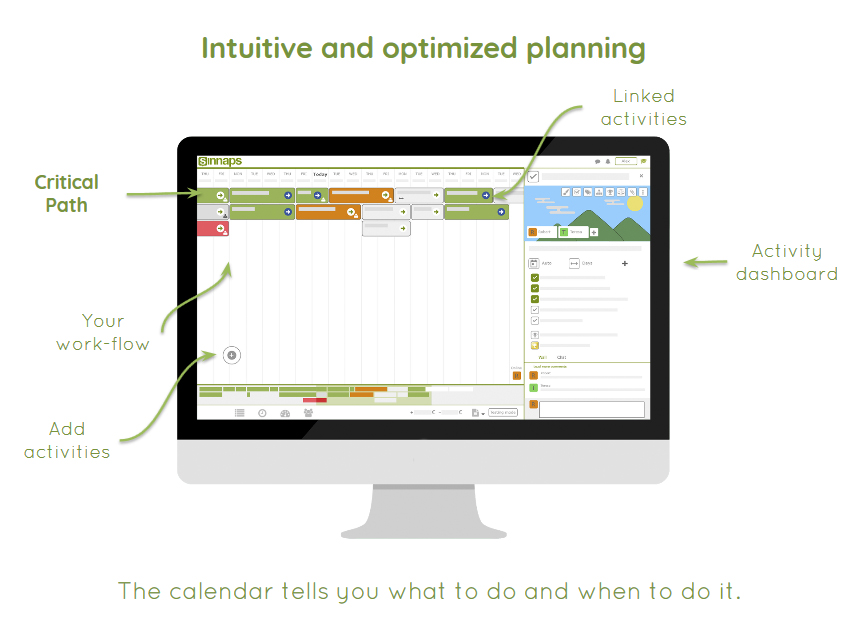
Sinnaps can help you to create a simple project design and become a project planning expert, using easily the best project planning techniques. The app is cloud-based, meaning that there is no specific installation required. Adding to this, all of your information is stored on the cloud along with project reports and documents, so you do not need to fear losing vital information to your project. The online app presents an effective and efficient way to plan your projects on an updated version of the traditional Gantt Chart known as the Gantt-flow.
The Gantt-flow is a platform where a project team can input the tasks that form part of the whole project. Task relationships and interdependencies are clearly outlined for all involved to consult. Team members and resources are assigned to each task and bottlenecks are identified. This is mapped out across the timeline of the project and serves as its visualisation- a useful tool for project managers, members and other stakeholders to follow. Project management sample projects are also available through templates from other Sinnaps users.
Across the project plan timeline, the critical path of the project which includes the most critical and important tasks to the project’s completion are easily traceable across the top of the Gantt-flow. Sinnaps calculates automatically the project’s critical path using PERT and CPM technologies and is one of the best project planner apps to use. A project execution plan template can show you exactly what a critical path looks like and how it greatly serves your project’s process.
Communication is key in project planning and management. Communication that is open and clear is a crucial part of project management throughout and is especially vital during the planning stage of the project. Sinnaps takes this aspect into consideration by the creation of live in-chat features and a project wall where members can consult any changes or addition that have been made to the project plan. Weekly updates on the project’s progress are also sent to team individuals through e-mail to make sure they are kept up to date with progress and notified of any changes.
A project management plan template in various formats the Sinnaps community provides can be used as project planning examples. You can export these templates to excel and edit them to your project’s own specific requirements. In the long-run, a successful project calendar template could save you crucial time in the future. This is one of the greatest benefits to an online project planner. You are exposed to others’ experiences and can learn in a positive environment of collaboration.
Key performance indicators are also included on the platform that measure resources, budget and time. This allows for members and the project manager to consult the indicators and judge project progress.
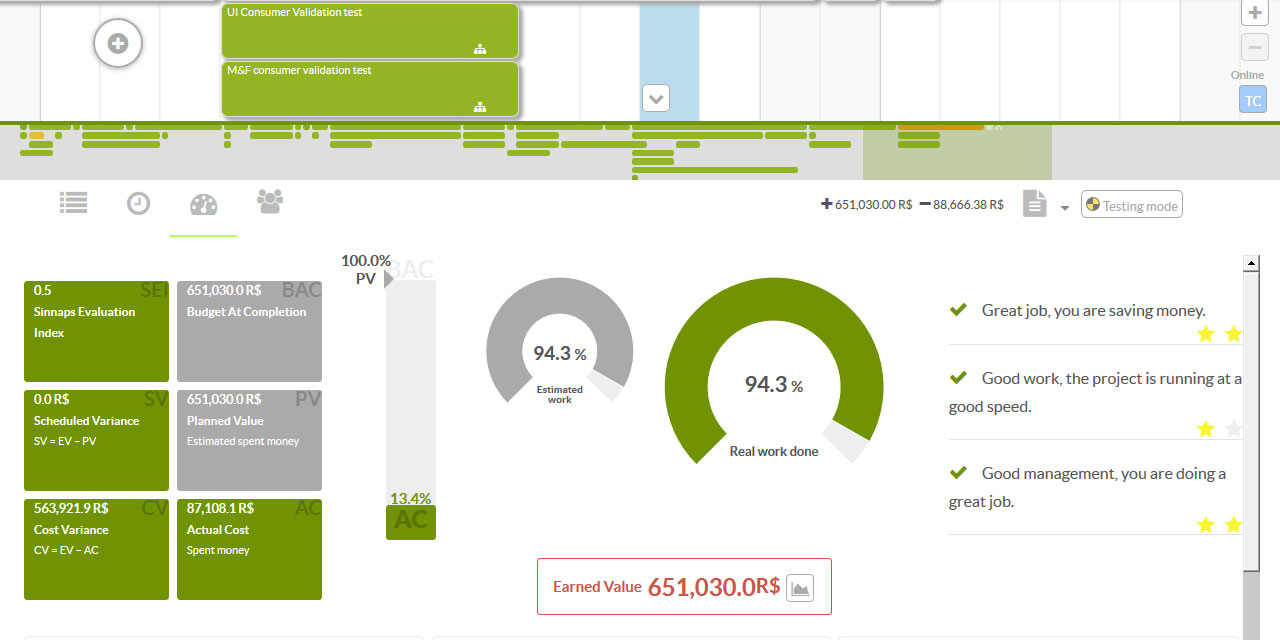
Project planning is clearly an essential step in project management that cannot be avoided. Software such as Sinnaps can help to greatly optimise your planning process. Make sure that everyone involved with your project is on the same page and start a project, planning it, whatever it may be, with Sinnaps today!
Here at Sinnaps, we love hearing what you think. Give this article a like if it has helped you and leave a comment sharing your opinion or asking any question you may have! We’ll be sure to get back to you! 😉

